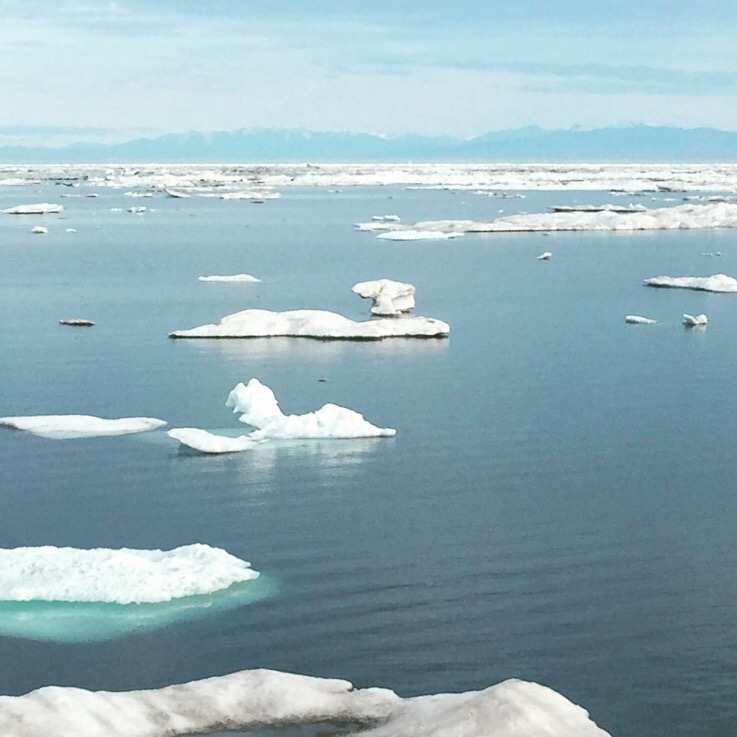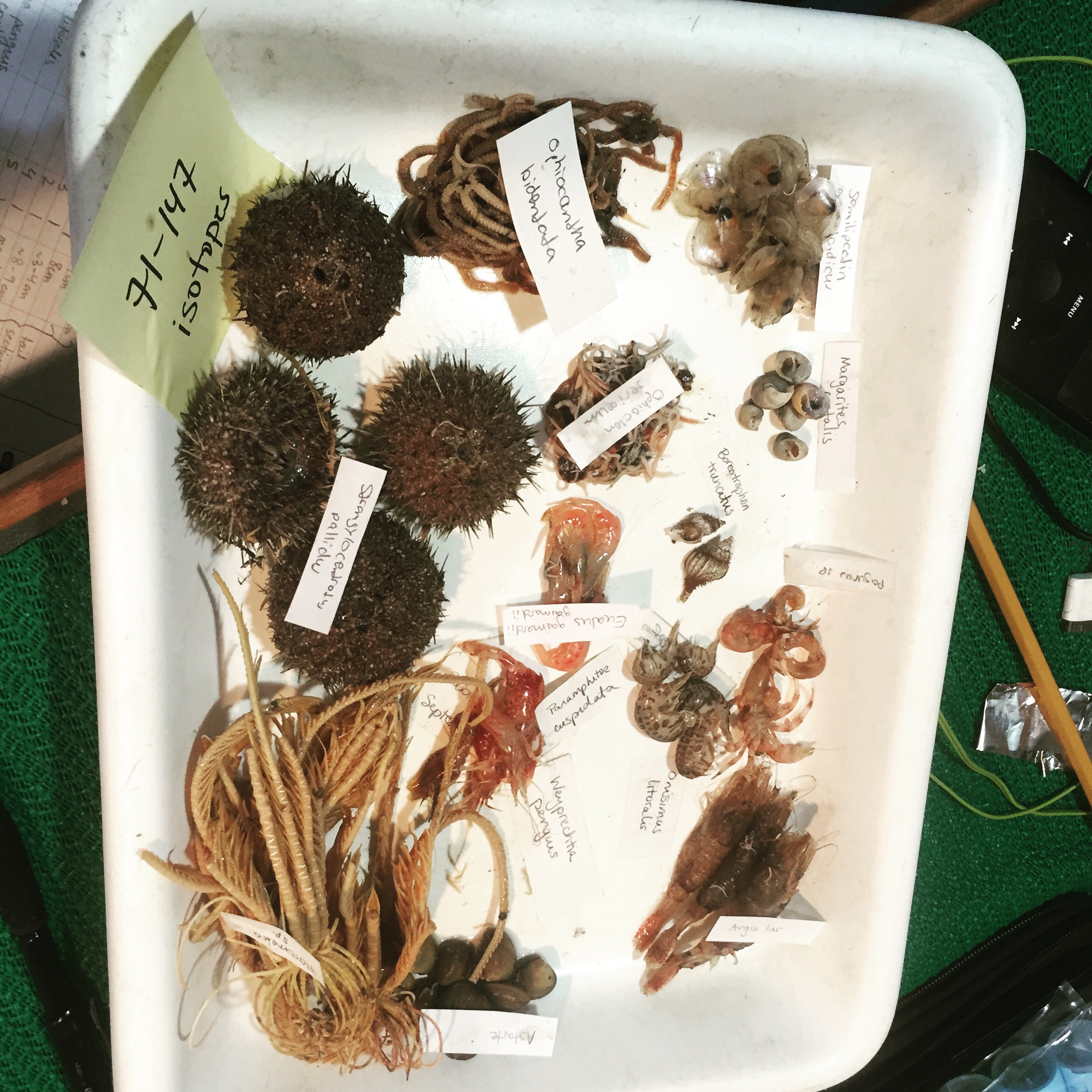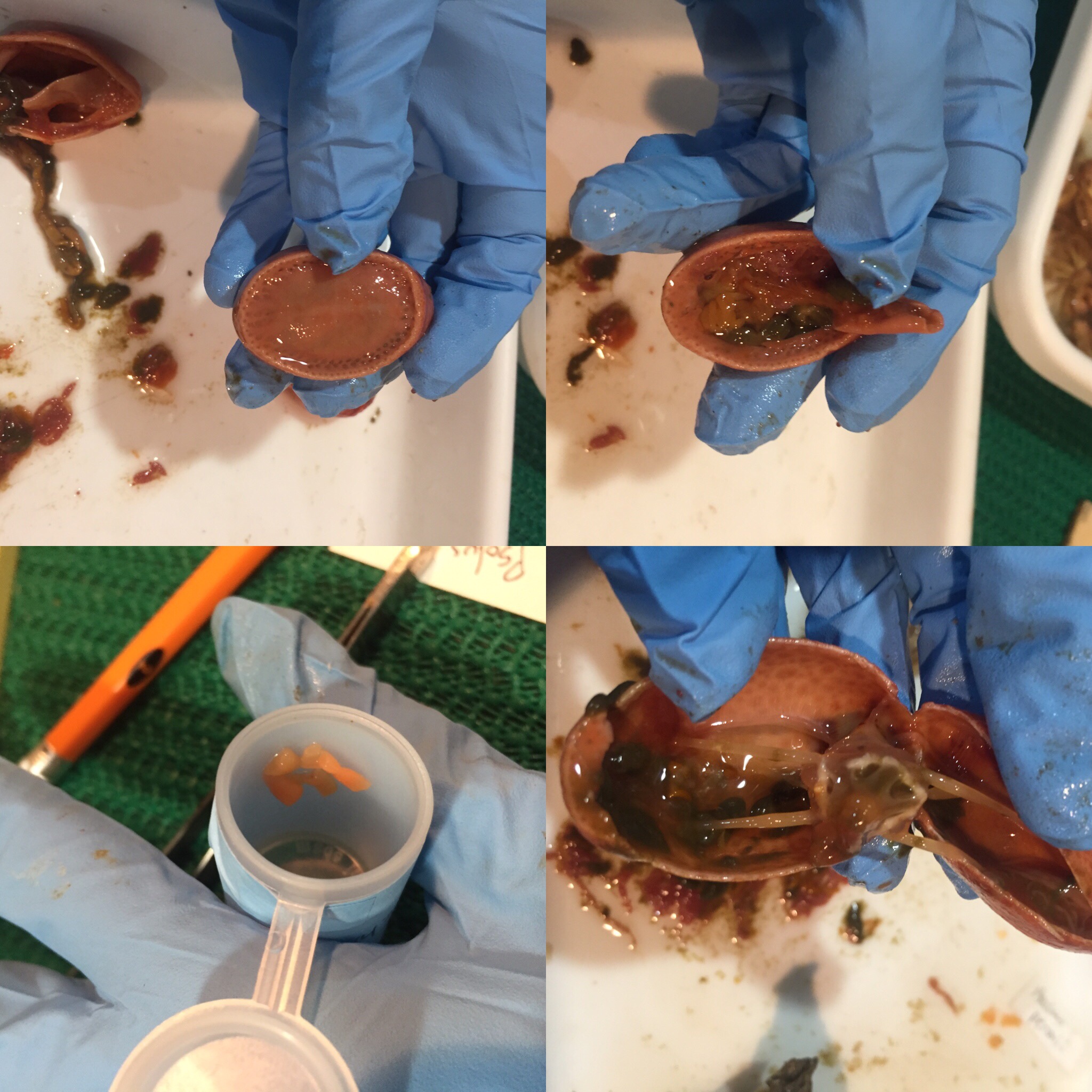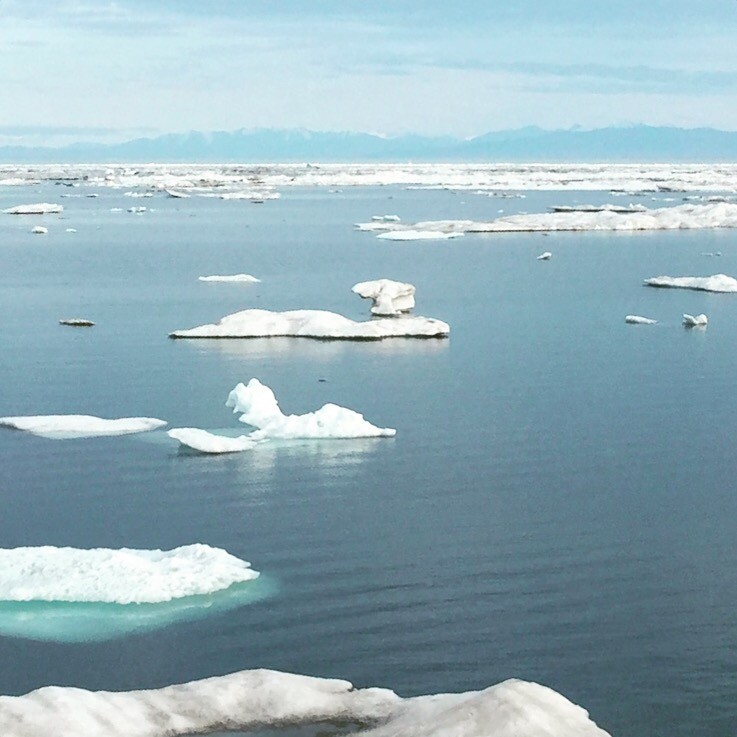 Coastal Beaufort Sea with a view of the Brooks Range. Credit: Carrie Harris.Graduate student Carolynn Harris, shares her adventures aboard the research vessel Norseman II. You can follow Carolynn adventures at: https://carolynnmharris.wordpress.com/blog/
Coastal Beaufort Sea with a view of the Brooks Range. Credit: Carrie Harris.Graduate student Carolynn Harris, shares her adventures aboard the research vessel Norseman II. You can follow Carolynn adventures at: https://carolynnmharris.wordpress.com/blog/I spent the first week of August back aboard the Norseman II for another research cruise! This time, our objective was to visit as many areas as possible in the Alaskan Beaufort Sea. We visited over 20 locations as shallow as 13 meters and as deep as 1000 meters! At each station, each disciplinary team (benthic, sediment, water column, etc) had a set of samples to collect and instruments to deploy. We used the transit time between stations to process our samples.
I was again a proud member of the “benthic team”, which consisted of my advisor, Ken Dunton, his taxonomist, Susan Schonberg, and grad students, Christina Bonsell and me! We hope to learn about what critters live on (and in!) the seafloor and determine the feeding relationships among them (who eats who? What primary producer is most important?).
 Sorted and labeled tray of critters from the trawl group. Credit: Carrie Harris.The first step of this process is finding the critters! To find the organisms that live in the sediment, we collect several intact chunks of the ocean floor (ie. mud), called grab samples. Each grab sample is painstakingly sieved over mesh to remove the mud and sand, but retain the organisms buried inside. Another group collects organisms living on the sediment for us, using a trawl net.
Sorted and labeled tray of critters from the trawl group. Credit: Carrie Harris.The first step of this process is finding the critters! To find the organisms that live in the sediment, we collect several intact chunks of the ocean floor (ie. mud), called grab samples. Each grab sample is painstakingly sieved over mesh to remove the mud and sand, but retain the organisms buried inside. Another group collects organisms living on the sediment for us, using a trawl net. The next step is sorting the critters by type and identifying each one to the lowest taxonomic level possible (ideally the exact species). Luckily, we have several expert taxonomists on board who make this daunting task look easy!
Once all the critters from a station are identified, my main job begins. The type of analysis we use to help determine feeding relationships (stable isotope analysis) works best on muscle tissue. So, I have to isolate and remove the muscles (or the next closest tissue) from some strange animals. Like sea cucumbers (lines of muscle attach their feeding apparatus to their body wall). And sea anemones (no muscles- I remove a body wall segment). And urchins (mouth membrane) and seastars (tube feet) and isopods (abdomen muscle)…. This process is easier with other critters like fish and clams and snails that have more obvious muscle tissue.
I spend long hours with my scalpel and dissecting scissors and forceps removing these muscle samples and storing them in small plastic vials. These vials are frozen on the ship and will be mailed back to our lab in Texas for future analysis!
 Clockwise from top left: 1) intact sea cucumber 2) open the ventral section and scoop out the guts 3) remove the lines of stretchy muscle tissue 4) store muscle samples in a pre-labeled vial. Credit: Carrie Harris.
Clockwise from top left: 1) intact sea cucumber 2) open the ventral section and scoop out the guts 3) remove the lines of stretchy muscle tissue 4) store muscle samples in a pre-labeled vial. Credit: Carrie Harris.









